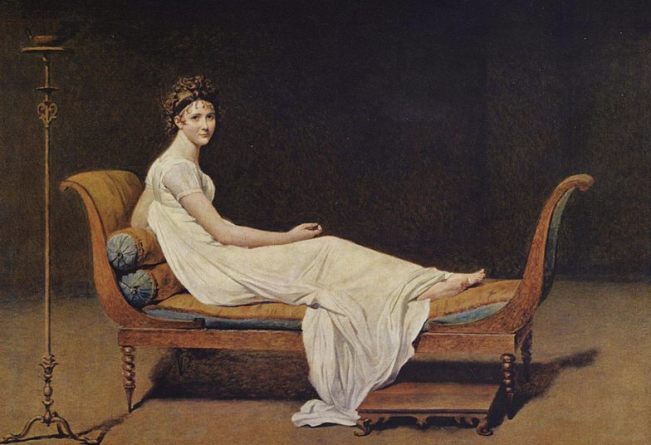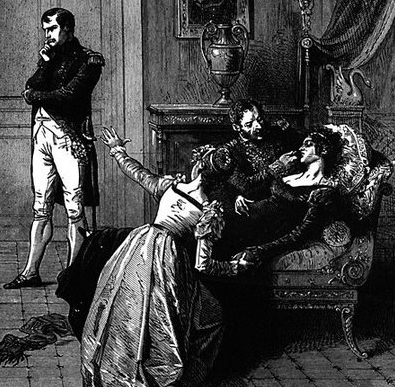The FAINTING COUCH is a couch with a back that is traditionally raised at one end. The back may be situated completely at one side of the couch, or may wrap around and extend the entire length of the piece much like a traditional couch.
However, fainting couches are easily differentiated from more traditional couches, having one end of the back raised.
Fainting couches were popular in the 19th century, and were particularly used by women.
Some houses would take this to the level of having separate fainting rooms, where these couches would be the featured furniture.
Daybeds became popular among the French aristocracy in the 19th century. Like the ruling class of centuries before this cultured class spent a good deal of their day lounging, reading, more lounging. The two most well-known daybed styles were the Récamier and the Méridienne.
The Récamier had two raised ends and was named after the French Society Hostess, Madame Récamier, and for the portrait that was painted of her on the chaise.


 The Méridienne was raised on one side with a slight back
and one armrest along the same side and named for the area of the house,
the meridian, where the sun would be in the middle of the day. Perfect
for cat napping.
The Méridienne was raised on one side with a slight back
and one armrest along the same side and named for the area of the house,
the meridian, where the sun would be in the middle of the day. Perfect
for cat napping.
Some houses would take this to the level of having separate fainting rooms, where these couches would be the featured furniture.
The Meridienne, classic for French lounging
The chaise lounge or “fainting couch” is a piece of furniture that
meets us somewhere between a bed and a chair. It is a luxurious piece
that has its roots with the ancient Egyptians and Greeks. The well
healed ruling classes spent large chunks of time lounging, eating and
drinking, more eating and drinking, and then even some more. We’ve all
seen the many images of these folks and their gods laying on one.Daybeds became popular among the French aristocracy in the 19th century. Like the ruling class of centuries before this cultured class spent a good deal of their day lounging, reading, more lounging. The two most well-known daybed styles were the Récamier and the Méridienne.
The Récamier had two raised ends and was named after the French Society Hostess, Madame Récamier, and for the portrait that was painted of her on the chaise.
Portrait of Madame Récamier by Jacques-Louis David


 The Méridienne was raised on one side with a slight back
and one armrest along the same side and named for the area of the house,
the meridian, where the sun would be in the middle of the day. Perfect
for cat napping.
The Méridienne was raised on one side with a slight back
and one armrest along the same side and named for the area of the house,
the meridian, where the sun would be in the middle of the day. Perfect
for cat napping.
These couches
continued in popularity during the Victorian era where they evolved into
the “fainting couch”. This was an era with corsets so tight as to
bring on a fainting spell. (Or perhaps a reprieve from dull
conversation?) “Fainting rooms” were not uncommon and were complete
with fainting couches and low lighting to assist in recovery.








No comments:
Post a Comment